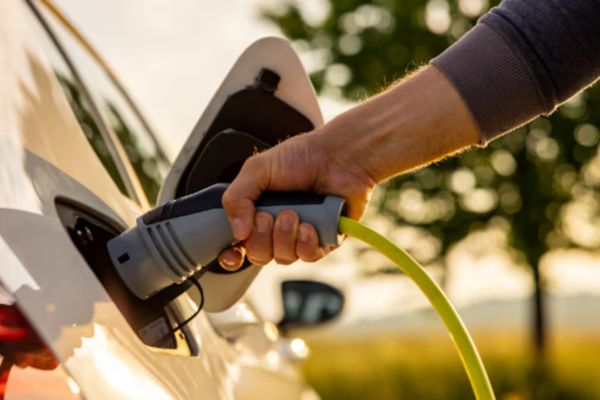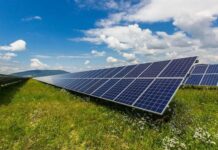By far, the biggest factor that determines the range and cost of an electric car is the battery. The now ubiquitous lithium-ion battery comes in a variety of chemistries. The first commercialized Li-ion batteries were lithium cobalt oxide (LCO), which remains the chemistry of choice in portable electronic devices, but the quest for a higher range has led to a search for new chemistries. Nickel manganese cobalt (NMC) cathodes have been favored in automotive for the past decade due to their higher energy density (Wh/kg), allowing more charge to be stored and thus enabling greater ranges, a key concern for potential customers.
However, a different cathode chemistry (discovered in the 1990s) has been seeing a surge in adoption over the past few years, particularly in China. Lithium iron phosphate (LFP) offers a lower-cost cathode compared to NMC and exhibits generally favorable safety and cycle life characteristics. The trade-off is a drop in energy density, typically around 170Wh/kg (at a cell level) compared to 260Wh/kg for NMC 811. Despite this, IDTechEx’s in-depth research of the global electric car market, “Plug-in Hybrid and Battery Electric Cars 2025-2045: Technologies, Players, Regulations, Market Forecasts”, shows that LFP has reached nearly 40% of the global car market in 2024. What does the reemergence of LFP mean for the electric car market for 2025 and beyond?
A split in the market, NMC for premium models and LFP for base trims
Naturally, in situations where range remains a priority, NMC (of increasingly high Ni contents) will be the cathode of choice. However, cost is the biggest barrier to adoption for many potential customers. This has led many OEMs to either implement or announce plans to introduce LFP batteries into their ‘base’ models, including Tesla, Stellantis, VW, and Renault. This comes amid a tough operating environment, with profitability for OEMs struggling amid a global slowdown in growth for the wider EV market. As regulations ratchet up, OEMs risk being squeezed between low-profit margin EVs and regulatory penalties. To this end, utilizing cheaper battery chemistries that afford ‘good enough’ performance is a logical approach.
No cobalt and nickel – but potentially room for manganese
LFP also offers a route to reduced reliance on cobalt and nickel, both of which are subject to price fluctuations. There has been particular concern around the sourcing of cobalt, and partial adoption of LFP allows OEMs, cell manufacturers, and materials companies to reduce their reliance on cobalt.
Another emerging cathode is lithium manganese iron phosphate (LMFP), which can offer a roughly 14% increase in energy density when compared with LFP. LMFP is seen possessing as a good mix of cycle life, energy density, and cost. IDTechEx expects the bulk of LMFP development to occur in China, building on the existing production and supply chains of LFP. IDTechEx’s report forecasts the expected cathode share of the BEV market across the next 10 years, quantifying the expected growth potential across each chemistry.
Developments to mitigate energy density penalty of LFP
On a technical level, cell design and manufacturing have allowed LFP energy density to improve and somewhat offset its inherent reduced energy density. BYDs Blade battery utilizes cell-to-pack and very long cells (arranged perpendicular to the long axis of the car) to reach energy density at a pack level of 150Wh/kg. The much-anticipated Blade 2.0 is set to have an energy density of around 210Wh/kg, although this has yet to be officially announced or confirmed by BYD. Future advancements such as cell-to-body and even cell-to-chassis will enable higher-range vehicles (although such advancements will also apply to NMC-type batteries).
Continued growth and expansion of charging infrastructure remove, to some extent, the requirement for large batteries. Ultimately, LFP is not going to overcome the energy density of NMC/NCA, but incremental improvements to both technology and infrastructure will allow it to cement itself as a viable option for lower-cost, affordable EVs.
Other battery developments are waiting in the wings
Silicone anodes, solid-state batteries, sodium-ion, and more are all promising various improvements in energy density, cost, and performance. IDTechEx broadly expects the battery market for EVs to diversify, with OEMs selecting different chemistries and formats for specific applications. The current industry-wide focus is a push to lower-cost vehicles, and this provides a strong opportunity for LFP to continue its growth outside of China. “Plug-in Hybrid and Battery Electric Cars 2025-2045: Technologies, Players, Regulations, Market Forecasts” also quantifies the expected annual battery demand (GWh) across different regions, highlighting the global capacity expected to be required to support the largest end source sector for batteries.
To find out more about this IDTechEx report, including downloadable sample pages, please visit www.IDTechEx.com/cars.
















